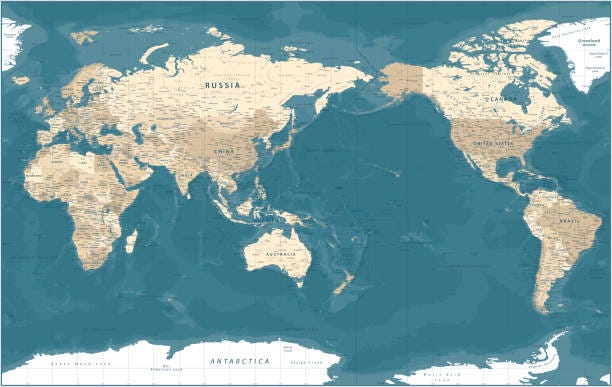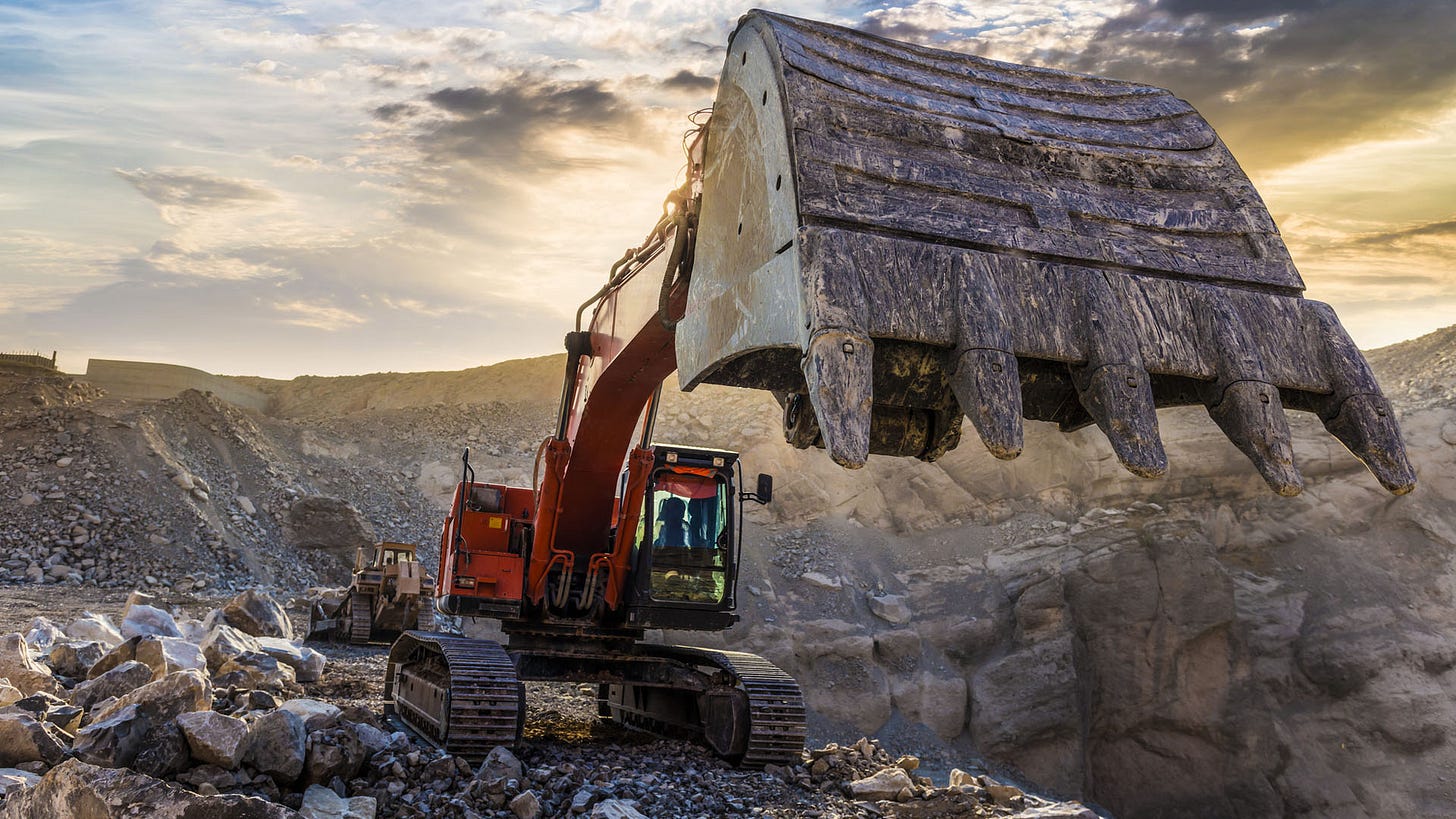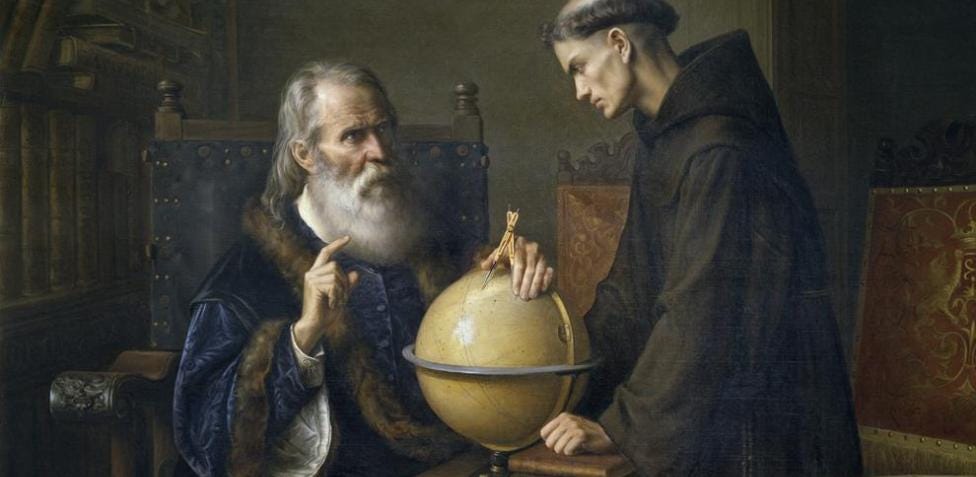77) El rompecabezas que se mueve: Las Tierras Raras
El abandono del eurocentrismo del planeta y una posible derivada de la transición energética.
El poder establecido de la época daba por válida la teoría geocéntrica, donde se afirmaba que la Tierra era el centro del universo, y que era el Sol quien giraba en torno a él. No obstante, en 1543 el astrónomo polaco-prusiano del Renacimiento Nicolás Copérnico postuló la teoría heliocéntrica, en la cual, se modificaba el eje de translación y se dictaminó que era la Tierra quien giraba alrededor del Sol.
En los últimos siglos hemos vivido en una época que bien podría llamarse el eurocentrismo. Este tiene su germen en la primera circunnavegación capitaneada por Juan Sebastián Elkano, considerado por muchos la mayor proeza náutica de la historia, y que, casualmente, hace unos meses cumplió el quinto centenario. Tras ello, innumerables países europeos han dominado el mundo, siendo el viejo continente el centro de operaciones. Sin embargo, el aumento demográfico que hemos vivido este último siglo, donde se ha triplicado el número de habitantes de la Tierra, ha supuesto una pérdida de peso específico de Europa dentro del tablero mundial (25% a 7%).
Patrick Wyman, en un brillante artículo llamado “¿Cómo sabes si estás viviendo la muerte de un imperio?”, destaca que las estructuras cinematográficas nos tienen acostumbrado a la narrativa imperante del ascenso, y su posterior declive y caída de un imperio. Pero la realidad no está unida a imágenes de columnas estriadas de templos que caen al suelo, derribadas por bárbaros vestidos de pieles que se esfuerzan por destruir algo hermoso.
La caída de un imperio —el fin de una forma de gobierno, un orden socioeconómico, una cultura dominante o todo entrelazado— se parece más a una serie en cascada de fracasos menores, individualmente sin importancia, que a un final dramático que aparece de la nada.
El análisis del autor sobre la caída del Imperio Romano señala a carros de suministros que no llegan a algún fuerte debido a una burocracia militar disfuncional, un funcionario corrupto que decide maquillar los libros y afirmar que se recaudaron los impuestos o un acueducto que se cae a pedazos y nadie dispuesto a adelantar los fondos para repararlo. ¿Seriamos capaces de observar ciertos paralelismos con la caída del imperio occidental en el siglo XXI?
En el pasado China no tuvo la visión estratégica de abrazar el cambio en la revolución industrial, quedando relegada al ostracismo. No obstante, hoy en día ha interiorizado que la ciencia y la tecnología es el único camino para elevar los estándares de calidad de sus ciudadanos, a la par de alcanzar el poder global. El Imperio Romano se capilarizó mediante acueductos y calzadas romanas para unir el corazón del Imperio en Roma con sus fronteras. Análogamente, China se quiere vertebrar mediante la nueva Ruta de la Seda 2050, con la intención de que todo el mundo pivote sobre su órbita. El mastodóntico plan estratégico que se guía por el ritmo glacial de la mentalidad china, contempla realizar obras públicas, tales como vías ferroviarias, puertos, aeropuertos, infraestructuras de IT… para ganar influencia por Eurasia.
De este modo el mundo conmuta su eje de translación, pasando de varios siglos de eurocentrismo al nuevo eje del indo-pacífico, convirtiéndose así en el sistema cardiovascular del planeta. Pero desgraciadamente, esta vez la República Popular de China podrá ejercer de órgano propulsor, ocasionando la brusca aparición de un cuadro isquémico, tras detener el riego de tierras raras a las economías inmersas en la transición energética que no estén en sintonía.
La pandemia Covid-19 nos demostró mediante las mascarillas, respiradores y vacunas, que depender de terceros países inevitablemente generará desabastecimiento en los momentos de máxima tensión. Análogamente, en la guerra de Ucrania hemos observado como Rusia ha empleado el gas natural como arma de guerra o como la Unión Europea, al tratarse de un gigante económico, ha aplicado sanciones económicas para tratar de languidecer la economía rusa.
Solamente los astutos escarmientan en cabeza ajena afirma el refrán, y considerando que China alberga un tercio de las reservas de tierras raras del mundo, el 60 % de la producción mundial de tierras raras y el 85 % de la capacidad de procesamiento de tierras raras, el grado de dependencia que subyace hacia el gigante asiático es inequívoco. De hecho, el mes previo al inicio de la guerra de Ucrania, China anunció la creación de una nueva empresa estatal, “China Rare Earth Group”, quien controla el 40% del suministro mundial.
Consciente de ello, la subsecretaria adjunta del Pentágono para la resiliencia industrial de Estados Unidos, Halimah Najieb-Locke, recalco que “No sabes cuánto está interconectado todo hasta que pierdes el acceso a una pieza del rompecabezas”. Por corolario, Joe Biden invocó la “Ley de Producción de Defensa” de 1950, promulgada por el presidente Harry S. Truman, para ordenar a compañías privadas a cumplir con las necesidades de defensa nacional y ese modo disponer de más herramientas para apoyar a la minería, el procesamiento y el reciclaje de materias primas críticas.
La Comisión Europea por su parte, ha presentado su “Green Deal Industrial Plan” y ha anunciado la creación de un “Club de Materias Primas Críticas” para agrupar a los consumidores de materias primas y a los países ricos en recursos con objeto de garantizar la seguridad global del suministro de estos minerales. Parece que esta nueva guerra fría azuzada por las tierras raras será multipolar.
En esa coyuntura, la Unión Europea no puede permitirse el lujo de cosechar otro fracaso “menor”, estando no solamente el cambio climático en juego, sino que la creación de la nueva economía industrial basada en el Internet de las cosas (IoT), la industria 4.0, energías renovables, almacenamiento eléctrico y un sinfín de nuevas tecnologías que dependen del suministro de tierras raras. El rompecabezas está en marcha, y desgraciadamente, es un juego de suma cero, lo que implica que existe un serio riesgo de que cualquier interrupción en la cadena de suministro desemboque en un infarto durante la transición hacia un futuro sostenible y descarbonizado.
No podemos permitirnos prolongar nuestro carácter inmovilista y pretender que las recetas pasadas sigan siendo válidas en el futuro. Puesto que si la Republica Popular de China actúa como imperio dominante, nadie podrá etiquetar este evento como un “Cisne negro”. La descripción que más se ajustará es la de “Rinoceronte gris” que acuñó Michele Wucker en la cumbre de Davos de 2013. Los Rinocerontes Grises son sucesos de alta probabilidad y tremendo impacto que, pese a ser reconocidos, se ignoran hasta que es demasiado tarde. Al igual que los rinocerontes, a pesar de ser catalogados como uno de los animales más peligrosos del mundo, cuando inicia súbitamente su carga contra los seres humanos, normalmente es demasiado tarde para la huida.
Ante tal panorama y tras todo lo previamente expuesto, resulta imprescindible que aprovechemos nuestros recursos, y por extensión, explotemos nuestros yacimientos y procesemos autóctonamente los elementos de las tierras raras, porque en su defecto, alguien lo hará en otro rincón del planeta y probablemente sin tener tanta consideración hacia el medioambiente. No debemos olvidar que el cambio climático es un fenómeno global, y carece de pasaporte. Por lo tanto, una vez asumido que debe de haber un cierto impacto sobre la Tierra, al menos, ser nosotros los responsables de realizarlo, con visos a minimizar dicho impacto por la concienciación ambiental que disponemos.
Porque el mundo, al igual que los bosques o los mares que bajo nuestros ojos parecen ecosistemas estáticos, se mueven constantemente. De igual modo, la civilización humana prosigue su evolución y nada más apropiado para finalizar este texto, que las palabras que Galileo Galilei murmuró cuando la Inquisición lo declaró "sospechoso de herejía" por apoyar la teoría heliocentrista en 1633, “Eppur si muove” (y, sin embargo, se mueve).
77) The Moving Puzzle: Rare Earths
The established power of the time accepted the geocentric theory as valid, where it was stated that the Earth was the center of the universe, and that it was the Sun that revolved around it. However, in 1543 the Polish-Prussian Renaissance astronomer Nicolás Copernicus postulated the heliocentric theory, in which the axis of translation was modified and it was ruled that it was the Earth that revolved around the Sun.
In recent centuries we have lived in a time that could well be called Eurocentrism. This originates from the first circumnavigation led by Juan Sebastián Elkano, considered by many to be the greatest nautical feat in history, and who, coincidentally, celebrated his fifth centenary a few months ago. After that, countless European countries have dominated the world, with the old continent being the center of operations. However, the demographic increase that we have experienced in the last century, where the number of inhabitants on Earth has tripled, has meant a loss of specific weight for Europe within the world table (25% to 7%).
Patrick Wyman, in a brilliant article called "How do you know if you are living the death of an empire?", points out that the cinematographic structures have accustomed us to the prevailing narrative of the rise, and its subsequent decline and fall of an empire. But reality is not wedded to images of fluted temple columns falling to the ground, toppled by fur-clad barbarians striving to destroy something beautiful. The fall of an empire—the end of a form of government, a socioeconomic order, a dominant culture, or all intertwined—is more like a cascading series of minor, individually unimportant failures than a dramatic ending that comes out of the blue. nothing.
The author's analysis of the fall of the Roman Empire points to supply wagons not reaching a fort due to a dysfunctional military bureaucracy, a corrupt official who decides to whitewash the books and claim taxes were collected, or a failing aqueduct. pieces and no one willing to advance the funds to repair it. Would we be able to observe certain parallels with the fall of the Western empire in the 21st century?
In the past, China did not have the strategic vision to embrace change in the industrial revolution, leaving it ostracized. However, today it has internalized that science and technology is the only way to raise the quality standards of its citizens, while attaining global power. The Roman Empire was capillarized by aqueducts and Roman roads to unite the heart of the Empire in Rome with its borders. Similarly, China wants to be structured through the new Silk Road 2050, with the intention that the whole world pivots on its orbit. The mammoth strategic plan that is guided by the glacial rhythm of the Chinese mentality, contemplates carrying out public works, such as railways, ports, airports, IT infrastructures... to gain influence throughout Eurasia.
In this way, the world switches its axis of translation, passing from several centuries of Eurocentrism to the new axis of the Indo-Pacific, thus becoming the cardiovascular system of the planet. But unfortunately, this time the People's Republic of China will be able to act as a propelling body, causing the sudden appearance of an ischemic condition, after stopping the irrigation of rare earths to the economies immersed in the energy transition that are not in tune.
The Covid-19 pandemic showed us through masks, respirators and vaccines that depending on third countries will inevitably generate shortages at times of maximum tension. Similarly, in the war in Ukraine we have observed how Russia has used natural gas as a weapon of war or how the European Union, being an economic giant, has applied economic sanctions to try to languish the Russian economy.
Only the cunning take punishment on someone else's head, the saying goes, and considering that China is home to one-third of the world's rare earth reserves, 60% of the world's rare earth production and 85% of the rare earth processing capacity, the degree of dependence that underlies the Asian giant is unequivocal. In fact, the month before the start of the war in Ukraine, China announced the creation of a new state company, “China Rare Earth Group”, which controls 40% of the world's supply.
Aware of this, the Pentagon's deputy assistant secretary for US industrial resilience, Halimah Najieb-Locke, stressed that "You don't know how interconnected everything is until you lose access to a piece of the puzzle." As a corollary, Joe Biden invoked the 1950 “Defense Production Act,” signed into law by President Harry S. Truman, to direct private companies to meet national defense needs and thus have more tools to support the mining, processing and recycling of critical raw materials.
The European Commission, for its part, has presented its "Green Deal Industrial Plan" and has announced the creation of a "Critical Raw Materials Club" to bring together consumers of raw materials and resource-rich countries in order to guarantee safety global supply of these minerals. It seems that this new cold war fueled by rare earths will be multipolar.
At this juncture, the European Union cannot afford to reap another "minor" failure, with not only climate change at stake, but also the creation of the new industrial economy based on the Internet of Things (IoT), the industry 4.0, renewable energy, electrical storage and a host of new technologies that depend on the supply of rare earths. The puzzle is on, and unfortunately, it is a zero-sum game, which means there is a serious risk that any disruption in the supply chain could lead to a heart attack during the transition to a sustainable and decarbonised future.
We cannot afford to prolong our immobility character and pretend that past recipes continue to be valid in the future. Since if the People's Republic of China acts as the dominant empire, no one will be able to label this event as a “Black Swan”. The description that will best fit is the “Grey Rhino” coined by Michele Wucker at the 2013 Davos summit. Gray Rhinos are high-probability, tremendous-impact events that, despite being recognized, are ignored until it is too late. . Like rhinos, despite being ranked as one of the world's most dangerous animals, when they suddenly start charging at humans, it's usually too late to run.
Faced with such a scenario and after everything previously stated, it is essential that we take advantage of our resources, and by extension, exploit our deposits and autochthonously process the rare earth elements, because failing that, someone will do it in another corner of the planet and probably without be so considerate of the environment. We must not forget that climate change is a global phenomenon, and it lacks a passport. Therefore, once it is assumed that there must be a certain impact on the Earth, at least we are responsible for carrying it out, with a view to minimizing said impact due to the environmental awareness that we have.
Because the world, like the forests or the seas that appear to be static ecosystems under our eyes, are constantly moving. In the same way, human civilization continues its evolution and nothing more appropriate to end this text than the words that Galileo Galilei murmured when the Inquisition declared him "suspected of heresy" for supporting the heliocentric theory in 1633, "Eppur si muove" (Eppur si muove) ( However, it moves).








